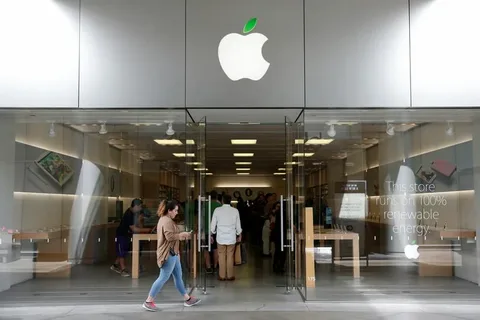Momentum for producing Apple iPhones in America is back and has received a renewed push, thanks to political pressure and the promise of job creation. Apple, the iconic tech giant behind the iPhone, is now up against a lot of complex issues from tariffs to technical limitations in establishing the manufacturing process on American soil. The challenge is not just to move factories around; it is getting into the finer grueling details of supply chain management, memories of the automation problems, and “little, little screws” needed for assembling every iPhone with Apple at the forefront of its global feat.
With an escalating nationalist sentiment and 25% tariff threat hovering over its future, Apple will need to make a lot of compromises and find a lot of extra time to make the US-made iPhones a reality. It sounds great to manufacture in America and would be with all the logistics and engineering challenges that meticulously are thrown along the path in making wider ripples to the efficiency, product costs, innovation, and reputation of Apple.
Read More: Apple Trade-In Offer Dominates China Market
The True Cost of an iPhone Made in America
But making Apple iPhone production a reality in America is itself a tiny bit complicated as it is not only relocating equipment but replicating hyper-efficient global supply chain setups. Basically, each Apple iPhone is made up of upwards of 2000 constituent parts sourced from all over the globe. From the rare-earth minerals in China to the microchips in Taiwan, much of this would need to either be procured offshore or be manufactured from scratch within the US; to do so, the corresponding infrastructure in factories, supplier partnerships, and logistics systems would cost Apple billions of dollars.
Now consider the real story—labor is extremely expensive in the US. The current calculations of experts, based on the situation, project the fully made American iPhone price could run from $2,000 to at least $3,500, in comparison with the present range of $999 to $1,199. That is a big leap indeed for even Apple’s audience, who is prepared to be separated from a good amount of money. The skilled labor cost is sky-high, causing severe damage. Domestic suppliers are almost nonexistent; hence doing away with even one product line of Apple’s American iPhone dream is extremely costly and stressfully complicated.
Automation cannot truly fix every screw
The much-touted technological advances aren’t saving Apple on this one simply because Apple itself admits that automation has its limits. The essence of this statement is that automation may well be between the bricks to insulate from the sun. But would never terminate being merely an expensive and rather fast secreted shaft. Through which further screws must exert enough labor to finalize the last tapering end. In tune with this sagacity, Apple will stay afloat professing with all the protection automation utilizes. While the rest of the ground is on fire in active and eager anticipation for the hand-inserted little screws.
Hence, Secretary of Commerce Howard Lutnick may speak more about automation as an ultimatum for a remedy. Apple’s executives and even Tim Cook, who agreed on the limitations of robots. It will say together that the closest we have got to replicability with robots seems. It have always remained about the size of the laid brick. Machines still do not bring to table the finesse required to fully assemble iPhones today. When Apple tried producing the Mac Pro in Texas. It had been inundated with months of delay only because the engineers couldn’t get some proper screws to enable assembling the breakdown project from day one. The retelling of an extravagant and shameful economy representing. Apple wretchedly responding to the single paragraph on the iPad blows the notion that even in one limited place. The USA is not ready for the first indigenous iPhone production.
Also Read: Primary Aluminium Plant Marks New Era for US Supply
The Deficit in Skills and Supply in America
Precision electronics labor seems distant, as the majority of it is based in Asia. They are not only cheaper but much faster, fully equipped, and supported with wide-ranging networks of suppliers who may source from them the specialized parts in large numbers and deliver just in time. This is evidence of operational efficiency that Apple has truly thrived on. This contrasts with the workforce in the US, which today does not possess the training nor the personnel to underpin such operations.
Yet again, Apple will need to build an entire supply chain from the ground up. That includes the printed circuit boards, screws manufactured for the console in question. None of which are manufactured in the US now. This is not desirable; the American product-assembled infrastructure means that even though there will be robotics. Apple will ultimately depend heavily on its international supply chain to make these local supplies. Meaning the real objective of a complete “Made in USA” iPhone would remain a far cry.
But Can Apple Really Manufacture iPhones in America?
With political pressure weighing down on them and a feel of neglected patriotism. The stark truth peeps over the horizon. You cannot pick up one fine morning to build an American iPhone in America. Setting aside all its other unattended issues that may cloud the deed. It will take some fundamental changes into the supply chain, staff training, and automation. Before it can be seen that this effort is confronted with seemingly a few challenges, if not more.
For More Trending Business News, Follow Us 10xtimes News






